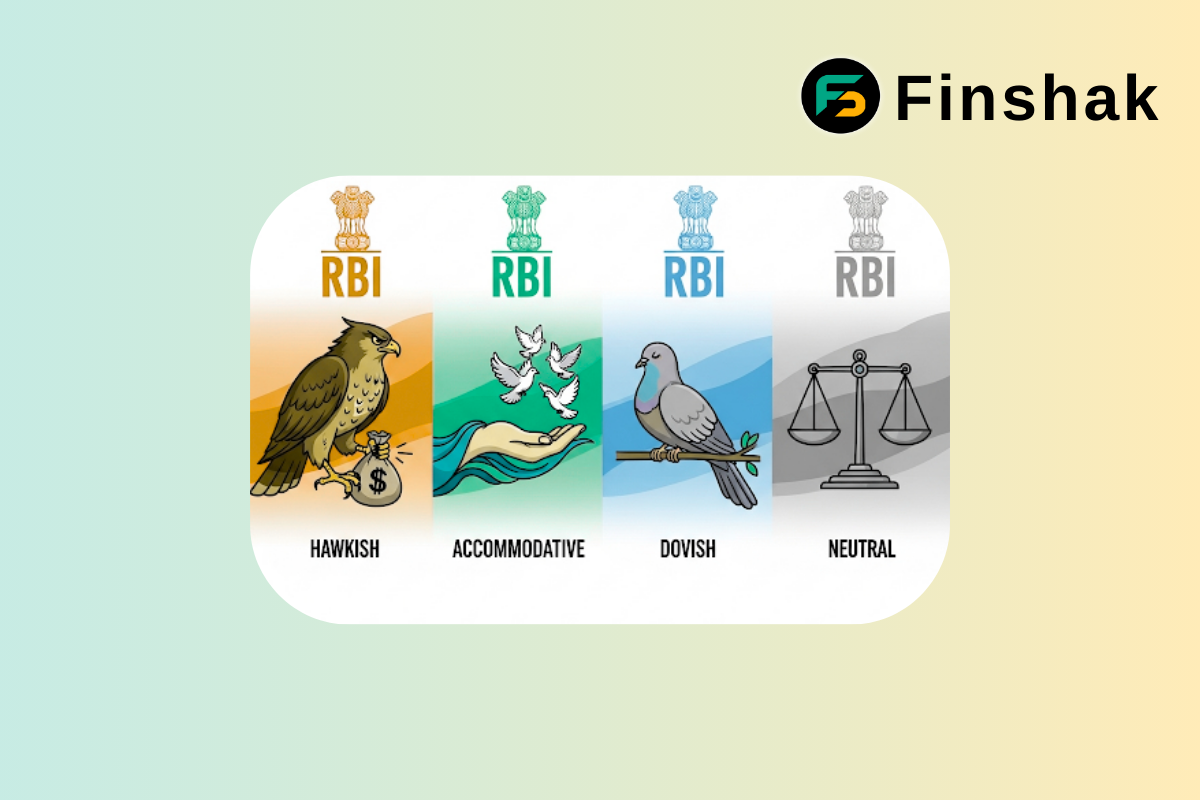
Why Does RBI Change Interest Rates? Unlocking the Secrets Behind Your Loan and Inflation!

Have you ever wondered why the interest rates on your bank loans change or why the prices of goods increase in the market? Behind all this, there is a big force at work – our Reserve Bank of India (RBI). The RBI controls the monetary policy of our country, and these policies have a huge impact on our daily lives. Today, let us learn about the 'monetary policy' of the RBI in simple terms, which will help you understand how money works.
Different types of RBI Monetary Policy stances:
Hawkish:
When inflation is high and the RBI wants to reduce it, it adopts a hawkish policy. In this, they raise interest rates. This makes borrowing expensive, people spend less, and the money supply decreases, which brings inflation under control. The impact on your pocket is that borrowing for a house or car may become a little more expensive, but you can earn more interest on your savings.
Accommodative:
When economic growth slows down and the RBI wants to stimulate the economy, they adopt an accommodative policy. In this, they lower interest rates. This makes borrowing cheaper, people spend more and businesses are encouraged to invest, which leads to economic growth. For you, this means that borrowing becomes cheaper and investing seems more attractive.
Dovish:
Dovish policy is similar to accommodative policy but more extreme. When economic growth is very slow and the RBI wants to encourage more people to spend, it adopts a dovish policy. In this, interest rates are cut very drastically, sometimes to almost zero. The aim is to give a big boost to the economy by encouraging people to borrow, spend and invest more. This has the effect that the cost of borrowing is very low and the interest rates on savings accounts are also reduced, which encourages people to spend money.
Neutral:
When the RBI wants to keep both inflation and economic growth in check, it follows a neutral policy. In this, it does not make any major changes in interest rates. This is a balanced policy, where the RBI monitors the current economic situation and remains prepared for future changes.
A simple example:
Imagine that the price of tomatoes has increased a lot in the market (this is inflation). Now the RBI adopts a hawkish policy and increases the bank interest rates. This makes people spend less money, and there is less rush to buy tomatoes, as a result of which the price of tomatoes gradually comes down.
On the contrary, if the sale of goods in the market is slow and people want to encourage buying, the RBI reduces the interest rates using an accommodative policy. People start buying goods by taking loans.
And if the economy is very slow and people want to encourage spending on a large scale, the RBI reduces the interest rates even more using a dovish policy, which makes borrowing very cheap, and people are motivated to make large purchases (such as a house or a car), resulting in a big boom in the market again.
General Blog
- Why Does RBI Change Interest Rates? Unlocking the Secrets Behind Your Loan and Inflation!
- What is a Mutual Fund Chain? Components, Process, and Benefits Explained
- Systematic Transfer Plan Explained with Types & Benefits
- SIP vs Lumpsum: Which Investment Strategy Is Right for You?
- Bharat Bond ETF: Safe Investment Option in India for Stable Returns
- Shariah-Compliant Mutual Funds: Who should Invest?
- Index Funds:Types, Advantages, Disadvantages & Who Should Invest
- Liquid Mutual Funds: Safe, Quick, and Rewarding Investments in 2025-26
- Portfolio Management Services (PMS)? Why is it needed?
- Hedge Funds in India: Definition, How They Work, and its Benefits
- What is Quant Mutual Fund? Meaning, Features, Types, Advantages
- What is a Thematic Fund? Meaning, Benefits, Risks & Examples in India
- Hybrid Mutual Funds: Types, Benefits, and Risks in India
- ITR Filing FY 2024-25 – Is It Mandatory if Income is Below ₹2.5 Lakh?
- What is a Debt Fund? Types, Risks & Benefits Explained
- Mutual Fund Performance and its Metrics
- How to Review Your Mutual Fund Portfolio
- Axis Mutual Fund Front-Running Scam|Who is Viresh Joshi?
- Role of Fund Manager in Mutual Funds
- Importance of Diversification in Mutual Funds
- Mutual Fund Fees – Impact Explained | Finshak
- How to choose the Best Mutual Fund
- How to Start Investing in Mutual Funds
- Risk Involved with Mutual Funds
- Benefits of Investing in Mutual Funds
- What is NAV in Mutual Fund?
- What is a Mutual Fund and ETF?
- What is a Mutual Fund?
- 5 TIPS FOR FINANCIAL PLANNING FOR WOMEN
- Growth V/s Value Investing: Which One To Choose?
- Top 3 Benefits Of Sip In Mutual Funds
Insurance
Mutual Funds
- The Role of Mutual Funds in Financial Planning: Diversification, Wealth Creation & More.
- TREPS in Mutual Funds: Meaning, Benefits & Why Funds Invest in It
- SWP in Mutual Funds: How to Get Monthly Income Like a Salary from Your Investment
- What is SIP? How Does Systematic Investment Plan Work?
- Gold Mutual Funds in India: Benefits, Risks, Returns & Why You Should Invest
- Growth Fund in India 2025: Meaning, Benefits, Risks & How to Invest
- What is an Equity Mutual Fund? | Types, Advantages & Top Funds in India 2025
- TOP Mutual Fund AMC in India
- History of Mutual Fund
Product Blog
No posts found in this category.
Stock Market
No posts found in this category.
What is Mutual Fund
No posts found in this category.












